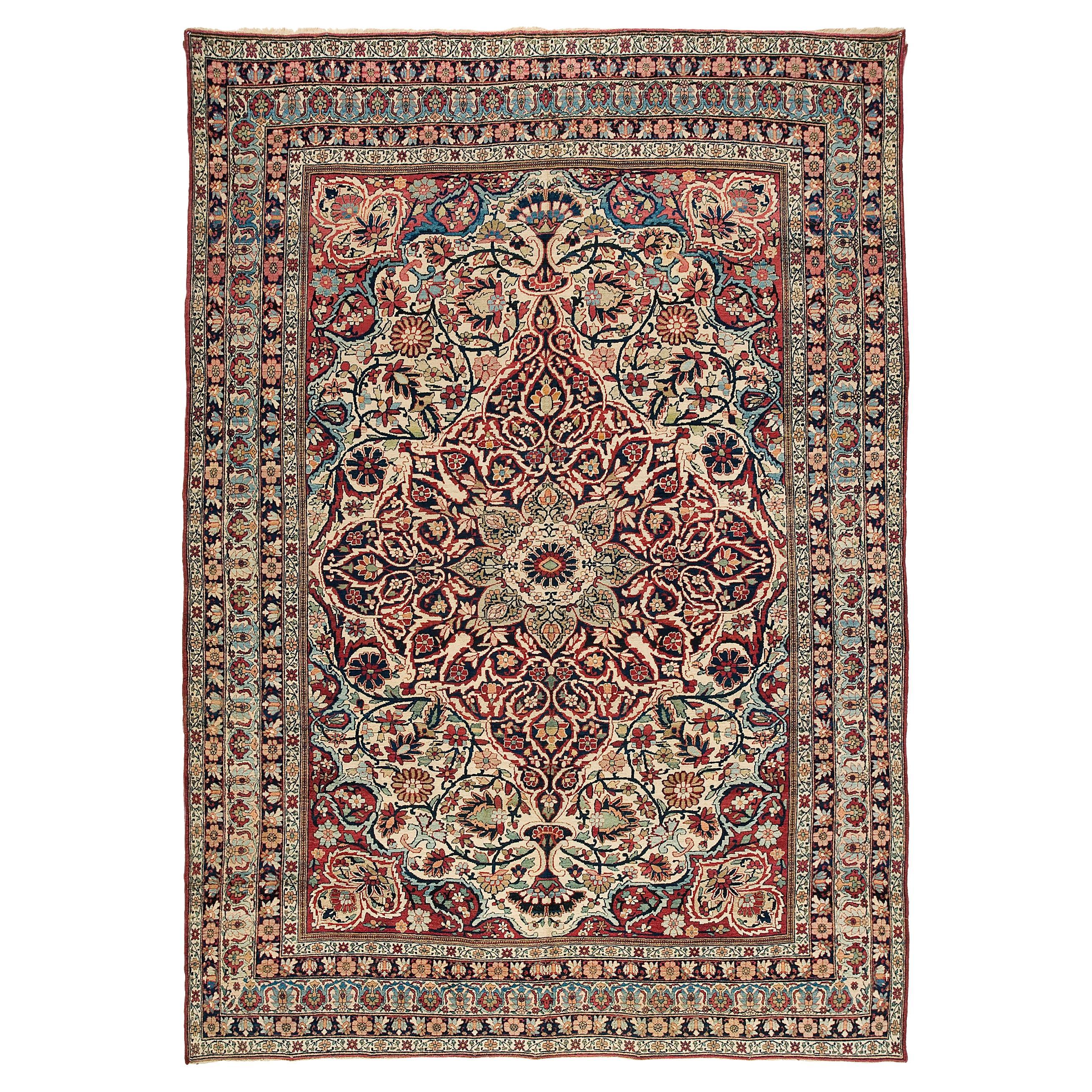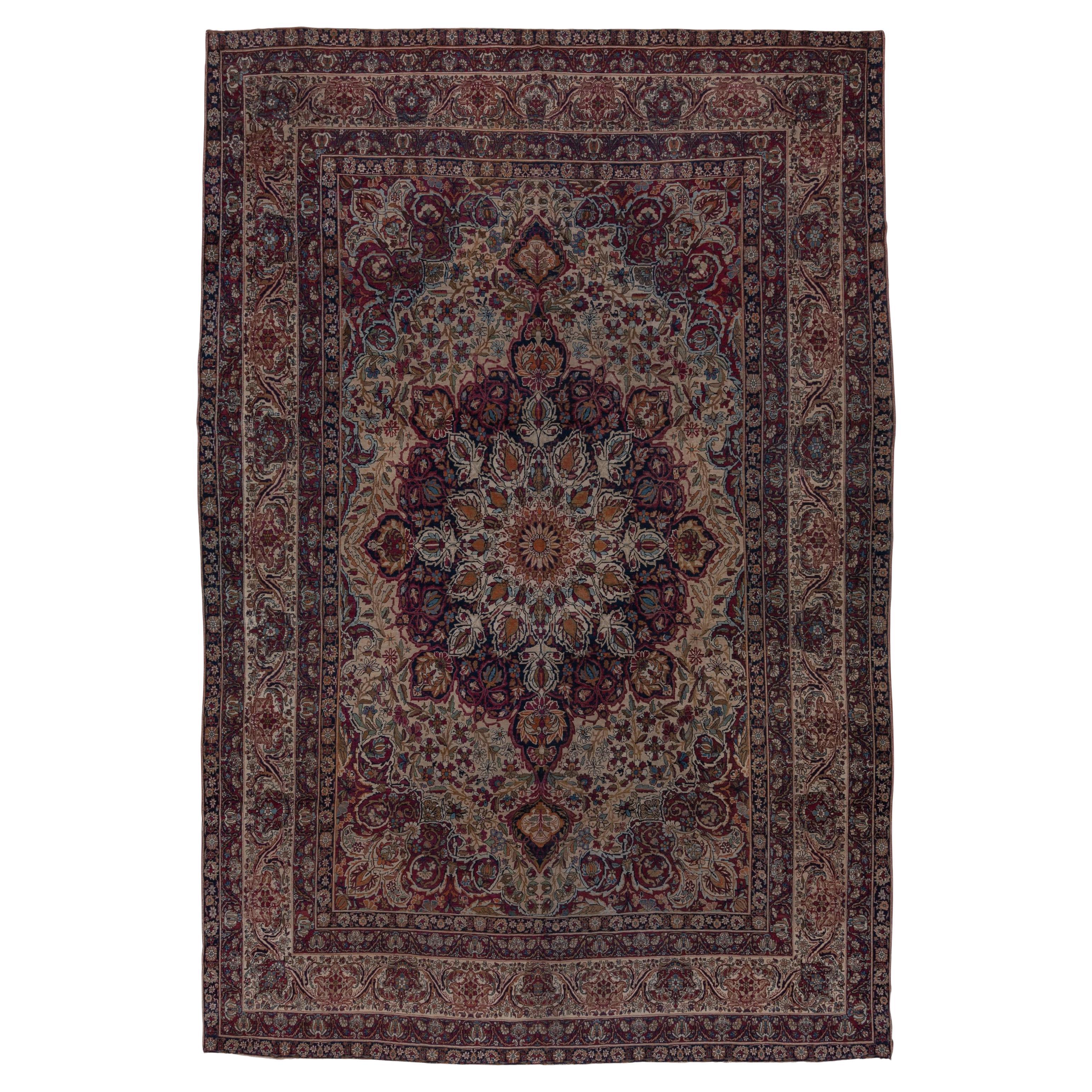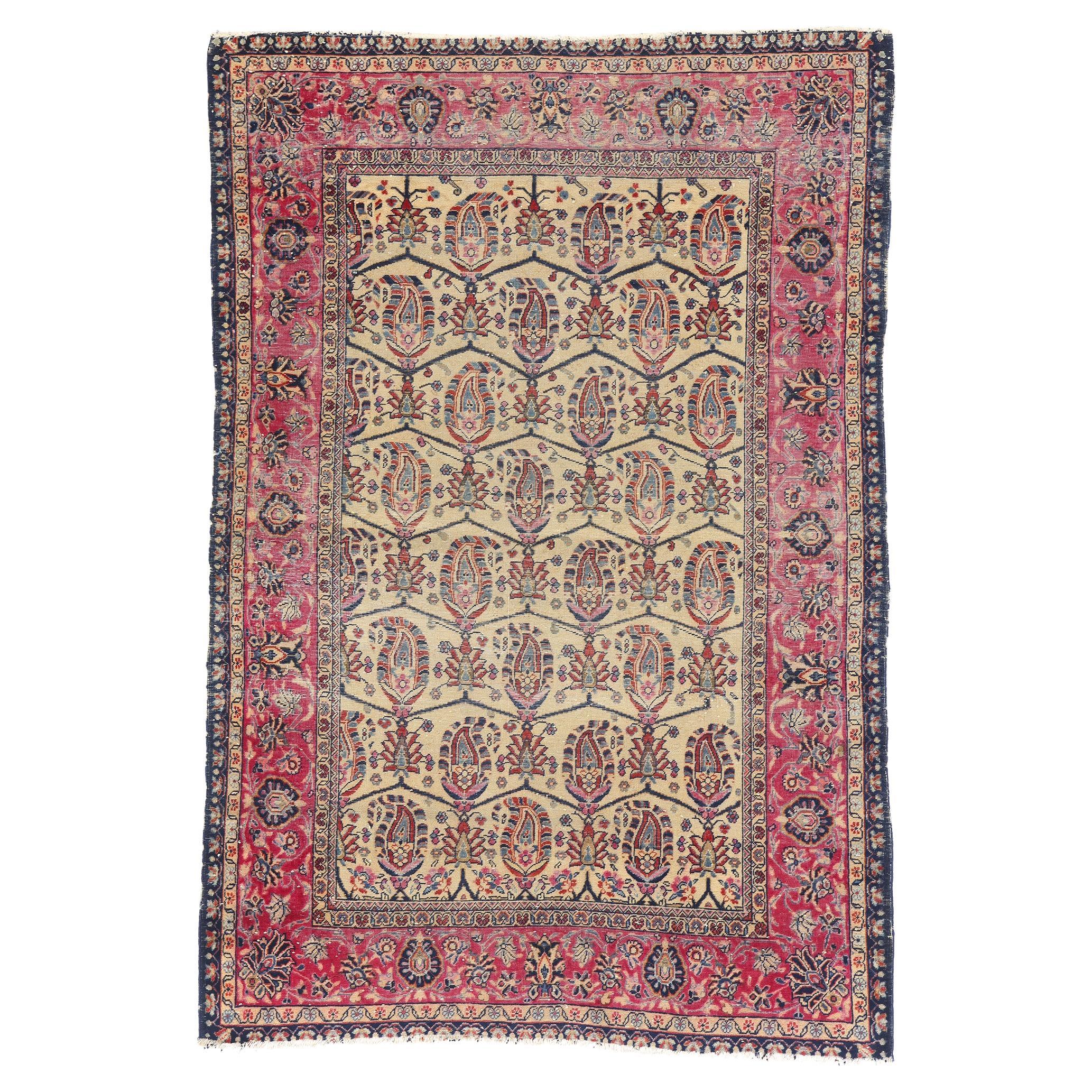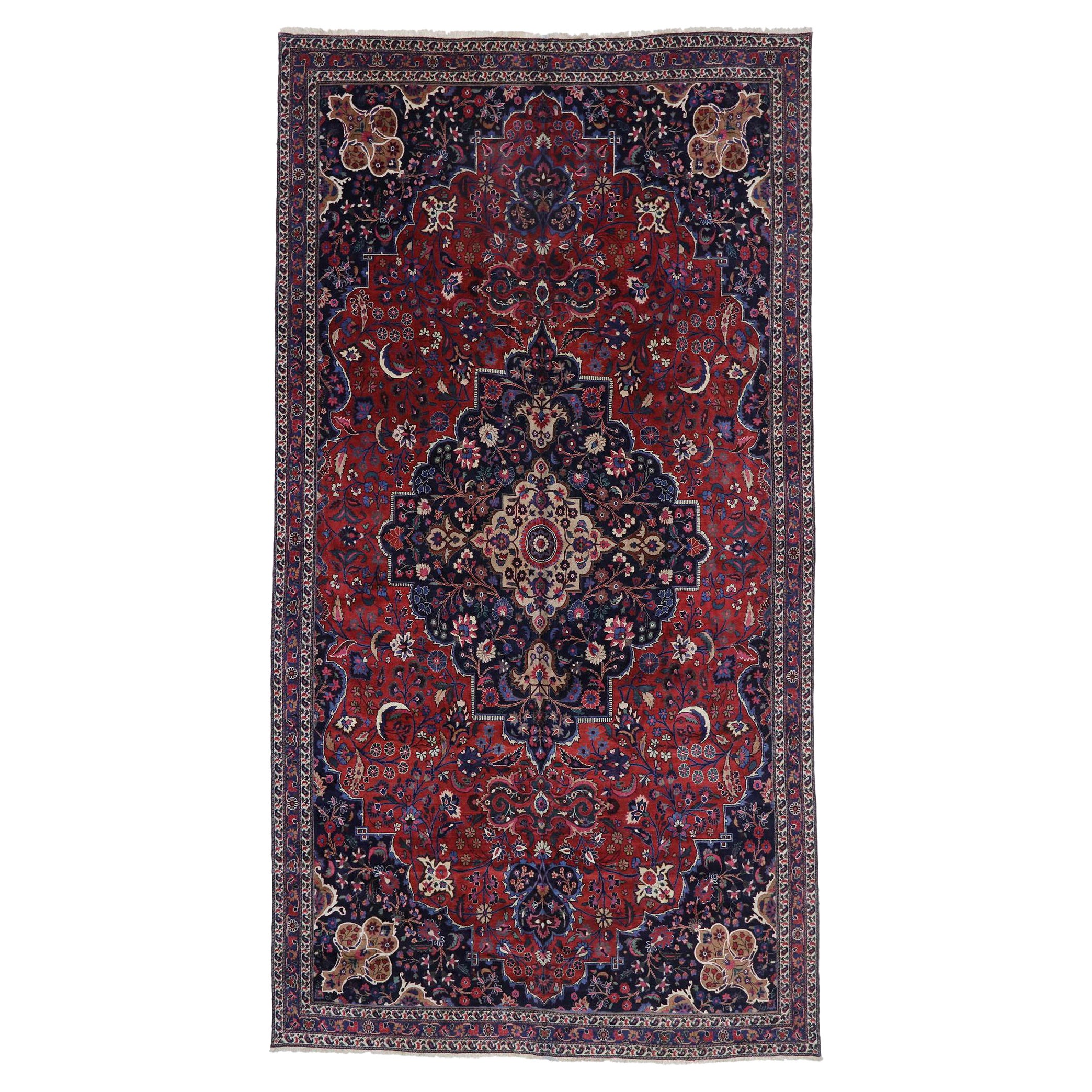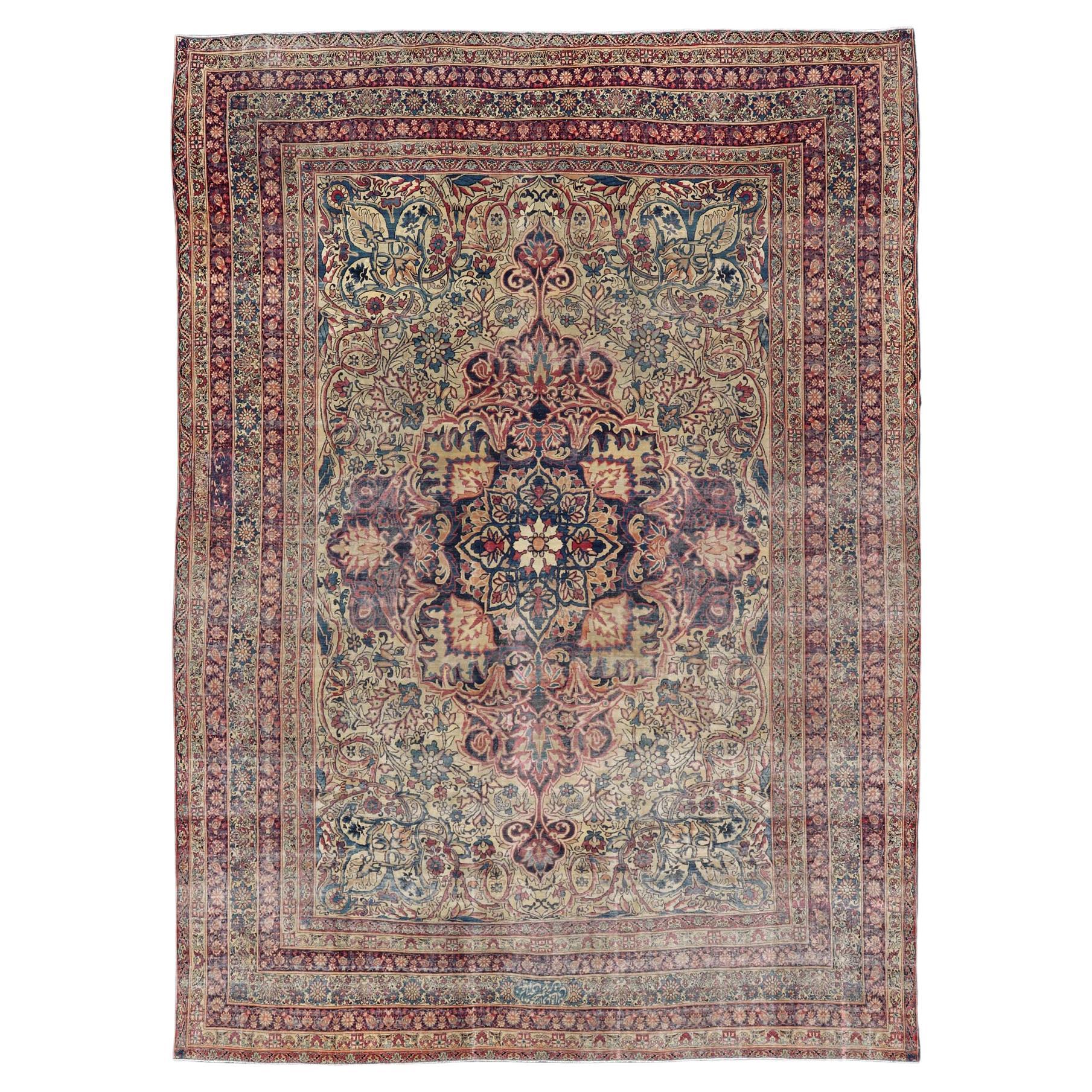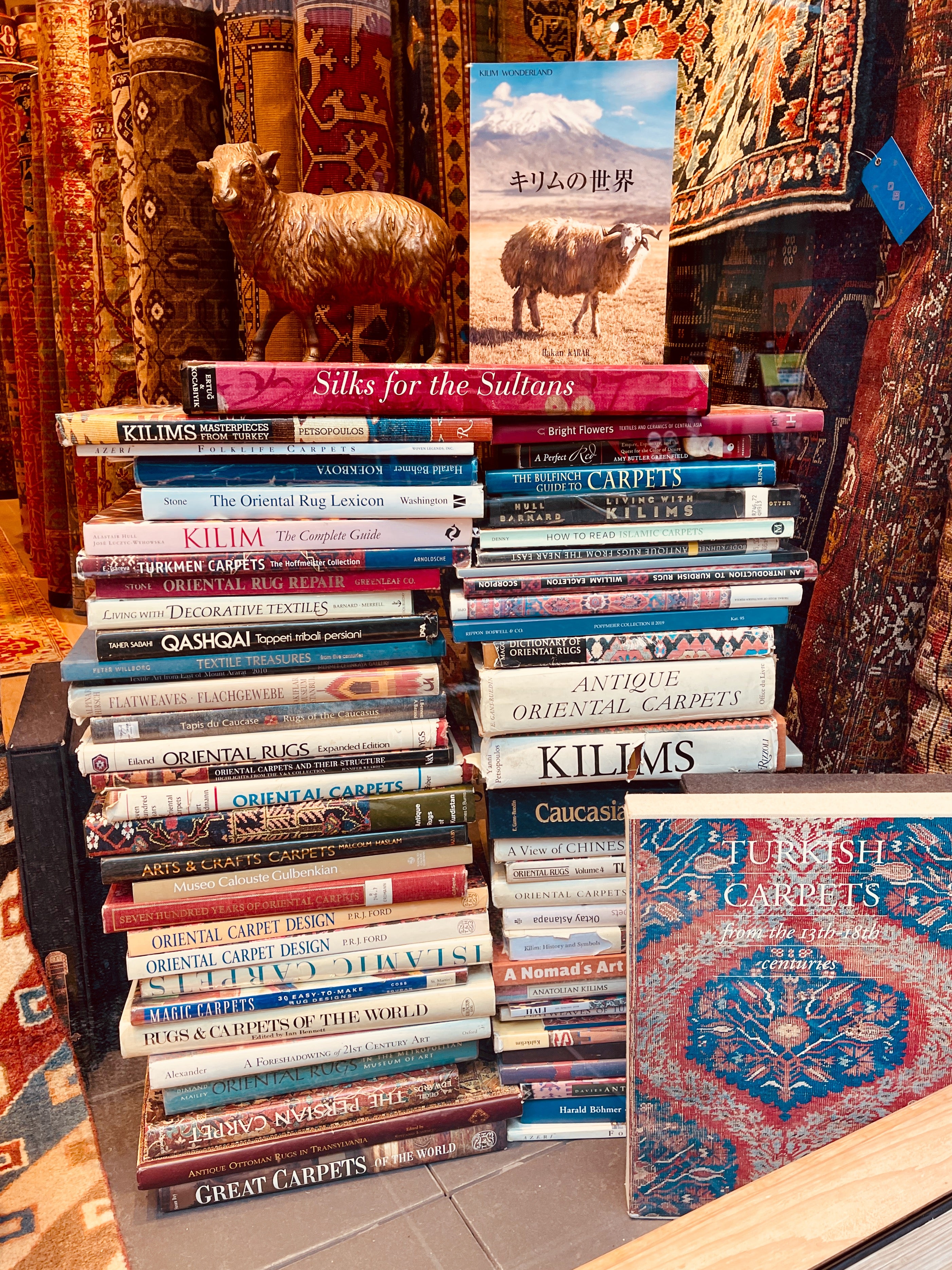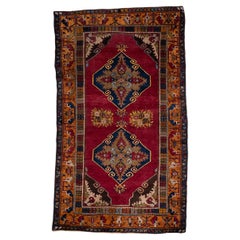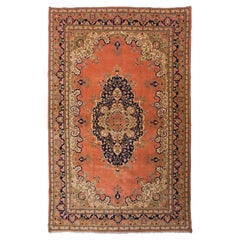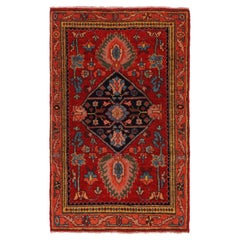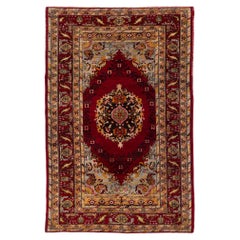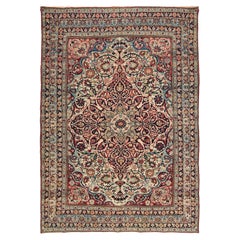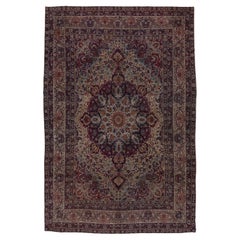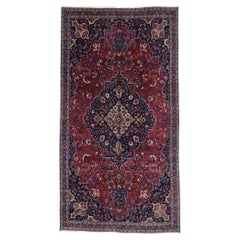Items Similar to Antique Lavar Kerman Old Medallion Rug Hand Knotted Kirman Persian Carpet
Video Loading
Want more images or videos?
Request additional images or videos from the seller
1 of 10
Antique Lavar Kerman Old Medallion Rug Hand Knotted Kirman Persian Carpet
$8,500
£6,453.05
€7,380.92
CA$11,875.73
A$13,208.41
CHF 6,897.02
MX$160,732.26
NOK 88,085.47
SEK 82,608.63
DKK 55,086.62
Shipping
Retrieving quote...The 1stDibs Promise:
Authenticity Guarantee,
Money-Back Guarantee,
24-Hour Cancellation
About the Item
This is an Antique Lavar Kirman Medallion Carpet from the Kirman region with a rare and beautiful color composition.
Kirman (Kerman) is one of the significant rug-producing areas of Persia. It has probably had a less eventful existence than any other center of comparable size, and the arts have been allowed to flourish and expand with relatively little interference from the outside. This can be accounted for by its geographical isolation, which kept the city outside of the usual commercial channels (except for the ancient caravan route to India, which decreased in importance as the sea routes were opened) and the arid climate that has made Kerman the poorest of the five significant provinces of Persia.
Carmania (Greek: Καρμανία, Karmanía, Old Persian: Karmanā, Middle Persian: Kirmān) is a historical region that approximately corresponds to the modern Iranian province of Kerman, and was a province of the Achaemenid, Seleucid, Arsacid, and Sasanian Empire. The region bordered Persia in the west, Gedrosia in the southeast, Parthia in the north (later known as Abarshahr), and Aria to the northeast. Carmania was considered part of Ariana. The city existed for centuries in provincial isolation, with its basic Persian population little disturbed by the repeated invasions that devastated other parts of the country. The Seljuks, conquerors of the area in the eleventh century, showed no desire to settle there, as they did in Azerbaijan and Hamadan, and the Mongols did not venture that far south. There was little incentive for them to do so, as Kerman was not wealthy. Under the Safavids, the province enjoyed undisturbed tranquility, and even the Afghan invasion was not a disruptive factor. The only major siege of the city occurred in 1794, and the army of Aga Mohammed Qajar did considerable damage. The city slowly recovered but remained relatively poor. In more recent times, it has been important almost exclusively as a carpet center, entering only peripherally into the political and social movements that have brought about much change in Persia.
The development of the carpet industry is poorly documented in Kerman, as elsewhere, although we have clear documentation that weaving occurred during Safavid's times. Some of the best wool in Persia- soft, white wool- is produced in Kerman; there were such limited opportunities for attracting money from the outside that turning the wool into a medium of exchange was virtually inevitable. Kerman fabrics of various types have thus developed to meet the prevailing styles demanded by commerce. In Marco Polo's day, the fabrics were not rugs, as he does not mention them while describing other types of cloth in detail. Chardin, who was in Kerman in 1666 and 1672, describes local carpets, as did the chronicle of Shah Abbas, the "Alamara-i-Abbasi." Carpets were shipped from Kerman to India during this time, and quite possibly, they influenced the weaving of that country. We do not know the Afghan invasion's effect on Kerman's industry, but we may surmise that it induced a decline. Still, carpet weaving must have continued at some level during the eighteenth century.
Much could be said to praise the design of Kerman rugs. Consistently, from the 1870s through the 1930s, the Kerman was exquisitely conceived and executed, with a more thorough design development than one finds elsewhere. Many of the finest rugs involved elaborate overall or panel designs, and there were many adaptations from various shawl patterns. The designers were encouraged to be inventive by their status in the city; they were among the most respected local artisans. They have probably contributed more to the art than all designers from the rest of the country combined, and many of the best from Kerman were enlisted in the founding of the Institute of Design in Tehran. While individual rugs of other cities might be more appealing than the finest Kermans, the general level of excellence has been unapproached.
In pattern, the carpets are distinguishable from those of the North and West by this purity of color and a greater boldness and originality of design, probably due to a slighter infusion of Arab prejudices on the representation of living forms. Flowers, trees, birds, beasts, landscapes, and even human figures are found on the Kerman carpets.
- Dimensions:Width: 54.34 in (138 cm)Length: 76.78 in (195 cm)
- Style:Oushak (In the Style Of)
- Materials and Techniques:
- Place of Origin:
- Period:
- Date of Manufacture:circa 1930s
- Condition:Repaired: Minor repairs, with antique natural dyed wool threads by our repair specialists. The overall condition is fair, with minor losses and structural damages. Wear consistent with age and use. Minor losses. Minor structural damages. Minor fading.
- Seller Location:Tokyo, JP
- Reference Number:1stDibs: LU8206241488852
ARARAT RUGS
We know and believe that the geography we come from, our past, and our lifestyle are the most important bond between us to carry the oriental carpet art and culture to the next generations along with our core values in our ongoing growth journey.
We are aware that the way to achieve this goal and carry this priceless art and culture to the future depends on a lot of work with all our people every day while adhering to our core values.
For us, art is meaningful in the sense that it brings together various cultures around the world. It is an honor for us that oriental carpet art and culture have been instrumental in this for centuries and that we are a part of this business.
We are tirelessly keeping an eye on auction house information around the world about carpets. New York's Metropolitan, London's Victoria & Albert Museums, and other famous art museums, as well as small specialized museums that house private collections, and books about oriental carpets to collect information on outstanding carpet designs and patterns from around the world. It's our Self-improving and Self-developing culture.
As Turkish Culture of Hospitality, the Kurdish Culture of Generosity, and as Japanese Culture of Business Punctuality; are the most important values that this multicultural background has taught and bequeathed to us. It is essential and valuable for us that you feel this feeling not only by looking at our oriental carpets but from the moment you contact us.
About the Seller
5.0
Platinum Seller
Premium sellers with a 4.7+ rating and 24-hour response times
Established in 1970
1stDibs seller since 2023
55 sales on 1stDibs
Typical response time: 3 hours
- ShippingRetrieving quote...Shipping from: Tokyo, Japan
- Return Policy
Authenticity Guarantee
In the unlikely event there’s an issue with an item’s authenticity, contact us within 1 year for a full refund. DetailsMoney-Back Guarantee
If your item is not as described, is damaged in transit, or does not arrive, contact us within 7 days for a full refund. Details24-Hour Cancellation
You have a 24-hour grace period in which to reconsider your purchase, with no questions asked.Vetted Professional Sellers
Our world-class sellers must adhere to strict standards for service and quality, maintaining the integrity of our listings.Price-Match Guarantee
If you find that a seller listed the same item for a lower price elsewhere, we’ll match it.Trusted Global Delivery
Our best-in-class carrier network provides specialized shipping options worldwide, including custom delivery.More From This Seller
View AllAntique Sivas Central Anatolian Old Medallion Rug Hand Knotted Turkish Carpet
Located in Tokyo, JP
This is a Central Anatolian Antique Double Medallion Carpet from the Sivas region with a rare and beautiful color composition.
Sivas In the third century, Sivas was a Roman city known as Sebastea, the capital of Armenia Minor. Flourishing under Byzantine rule, Sivas reached a peak of prosperity under the Seljuks, only to be plundered in the fourteenth century by Tamerlane, as it was an important venue on the Persian and Iraqi trade routes. The Sivas region is inhabited by Turkish and Kurdish people, and until the genocide wrought by the Turks early this century, many Armenians dwelt there as well. Sivas gained certain fame as the site for the Sivas Congress of September 1919, convened by Mustafa Kemal...
Category
Mid-20th Century Turkish Oushak Turkish Rugs
Materials
Wool, Natural Fiber
Semi Old Ladik Rug Wool Hand Knotted Konya Central Anatolian Turkish Carpet
Located in Tokyo, JP
This is a Central Anatolian Ladik Semi-old Carpet from the Konya region with a rare and beautiful color composition.
This highly collectible carpet has wonderful special pastel colo...
Category
Mid-20th Century Turkish Oushak Turkish Rugs
Materials
Wool, Cotton, Natural Fiber
$3,840 Sale Price
20% Off
Free Shipping
Ararat Rugs Gerous Bidjar Wagireh Medallion Rug Revival Carpet Natural Dyed
By Ararat Rugs
Located in Tokyo, JP
The most dramatic of the Gerous ( Garrus, Gerus, Garus ) carpets are those with an “asymmetric” design. Only a section of the original is shown, in the same way, many Lotto carpets w...
Category
21st Century and Contemporary Turkish Revival Persian Rugs
Materials
Wool, Natural Fiber, Organic Material
Vintage Old Village Rug Wool Hand Knotted Konya Central Anatolian Turkish Carpet
Located in Tokyo, JP
This is a Central Anatolian Semi-old Carpet from the Konya region with a rare and beautiful color composition.
This highly collectible carpet has wonderful special colors and textur...
Category
Mid-20th Century Turkish Oushak Turkish Rugs
Materials
Wool, Natural Fiber, Cotton
$3,080 Sale Price
20% Off
Free Shipping
Ararat Rugs Heriz Medallion Rug 19th Century Persian Revival Carpet Natural Dyed
By Ararat Rugs
Located in Tokyo, JP
This is a medallion design rug from the late 19th century, Heriz region, Northwest Persia area. Heriz ( Heris ) is a special Turkish knot weaving area of Persia, including many villa...
Category
21st Century and Contemporary Turkish Revival Persian Rugs
Materials
Wool, Natural Fiber, Organic Material
Vintage Borujerd Lorestan Village Rug Lori Carpet Northeast Persian Hand Knotted
Located in Tokyo, JP
This is a Northeastern Persian Borujerd Style Carpet from the Lorestan region with a rare and beautiful color composition, featuring a red, blue, and salmon color scheme. Its foundat...
Category
Mid-20th Century Caucasian Oushak Persian Rugs
Materials
Wool, Natural Fiber, Cotton
$704 Sale Price
20% Off
Free Shipping
You May Also Like
Late 19th Century Lavar Kerman Carpet
Located in Closter, NJ
The city and province of Kerman is geographically isolated in the great desert of southern Persia. An industry of both shawl and carpet production has flourished there since the Safa...
Category
Antique Late 19th Century Persian Kirman Persian Rugs
Materials
Wool, Cotton
Antique Lavar Kerman Carpet, circa 1900s
Located in New York, NY
Of lavar quality, this well-woven SE Persian urban carpet displays a pendanted charcoal medallion enclosing a 12-point ivory palmette Sub-medallion, all on the pale pistachio ground ...
Category
Antique Early 1900s Persian Kirman Persian Rugs
Materials
Wool
Late 19th Century Antique Persian Kerman Rug with Traditional Style
Located in Dallas, TX
79259 Late 19th Century Antique Persian Kerman Rug, 03'03 x 04'10. Woven in the twilight of the 19th century in the storied workshops of Kerman, this hand-knotted wool Persian rug is...
Category
Antique Late 19th Century Persian Kirman Persian Rugs
Materials
Wool
Antique Persian Mashhad Rug with Baroque Victorian Style
Located in Dallas, TX
77748 Antique Persian Mashhad rug with Baroque Victorian Style 10'06 x 19'07. Ravishing and vibrant this hand knotted wool antique Persian Mashhad area rug features an elaborate cusp...
Category
Early 20th Century Persian Kashan Persian Rugs
Materials
Wool
$15,999 Sale Price
20% Off
Large Antique Persian Lavar Kerman Rug with intricate Design 13'6 x 18'
Located in Atlanta, GA
Large Antique Persian Lavar Kerman Rug with Blooming Central Medallion. Keivan Woven Arts / Lavar Kerman Antique rug from Persia with vibrant...
Category
Antique Late 19th Century Persian Kirman Persian Rugs
Materials
Wool
$45,000 Sale Price
25% Off
Antique Persian Bakhtiari Medallion Carpet, 13'02 x 17'04
Located in Dallas, TX
76757 Antique Persian Bakhtiari Rug, 13'02 x 17'04. Immerse yourself in the regal heritage of the Bakhtiari tribespeople from the rugged Zagros Mountains, as classic elegance seamlessly converges with the sophistication reminiscent of Ivy League style in this hand-knotted wool oversized antique Persian Bakhtiari rug. Woven with meticulous care by skilled craftswomen, this magnificent piece pays homage to the traditional designs and enduring allure of Bakhtiari rugs. The corner medallion design, an ode to Persian craftsmanship, evokes a sense of timeless opulence that mirrors the distinguished ambiance of Ivy League traditions.
Intricately crafted on a canvas of abrashed red, the antique Bakhtiari rug unfolds a narrative of sophistication. A resplendent red medallion takes center stage against a navy blue backdrop, flanked by navy blue pendants...
Category
Early 20th Century Persian Modern Persian Rugs
Materials
Wool
$18,928 Sale Price
29% Off
More Ways To Browse
Greece Medallion
Greek Medallions
Siege Antique
Antique Persian Qajar
Qajar Art
Shah Qajar
West Country Settle
1970s Oak Table
Black Empire Table
Black Tripod Table
Bronze Frame Chair
Carved Library Table
Designer Ashtray
Fox Head
German 1930s Ceramics
German Wooden Chairs
Glass Goblet Set
Luxury Entry Console Table
